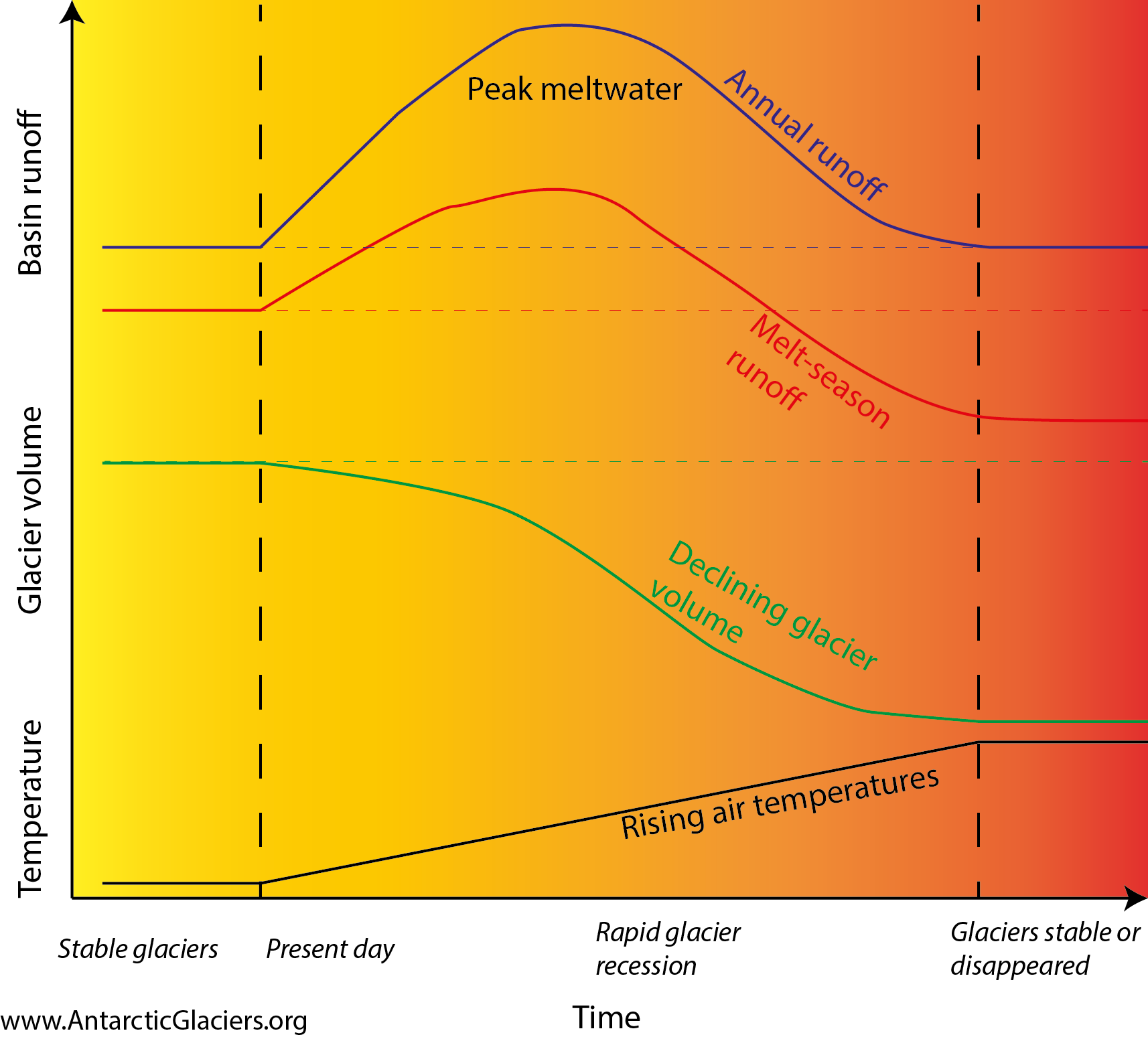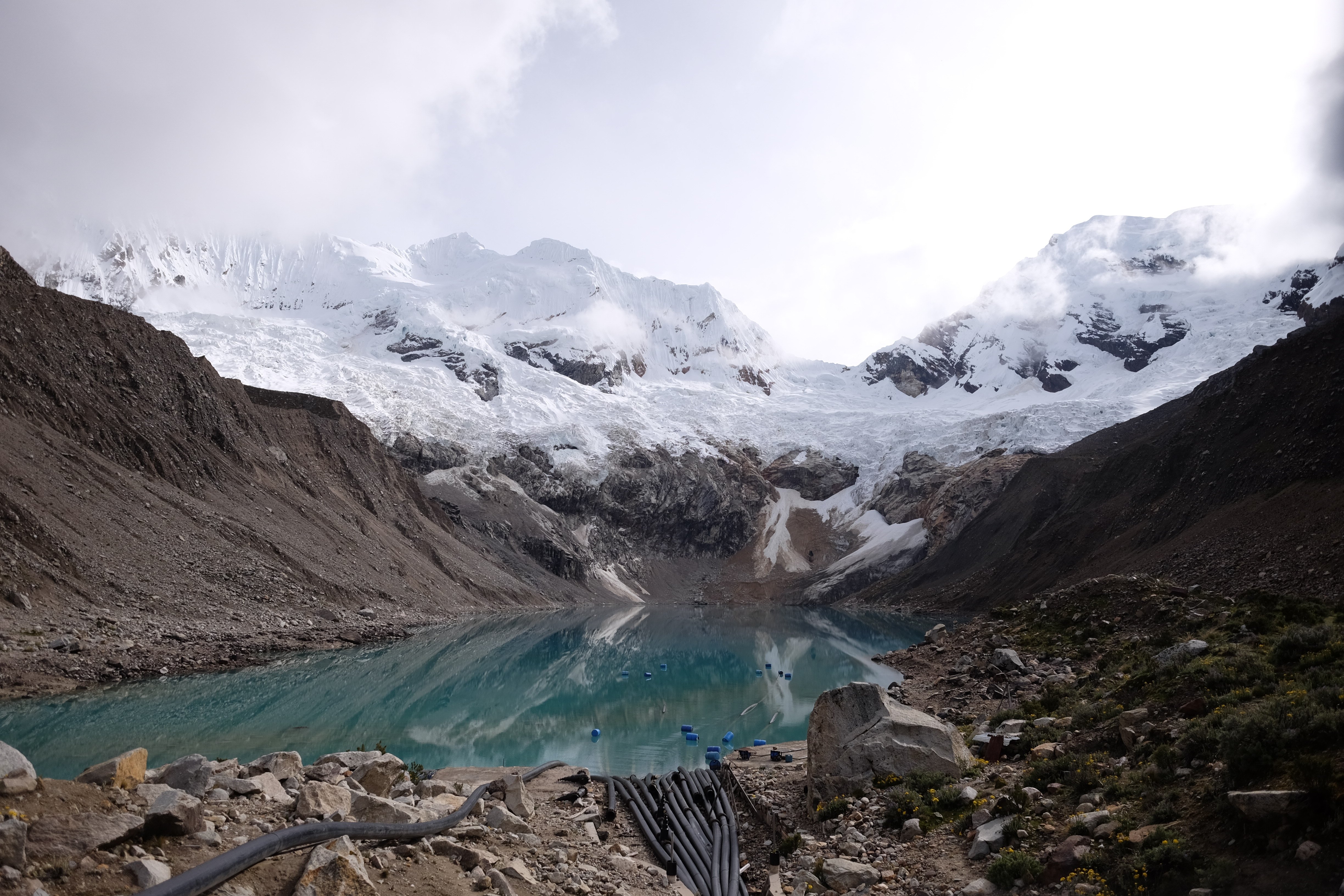The Andean Water Tower: Investigating the effects of deglaciation
11 May 2023 | By: Dr Owen King | 4 min read
The loss of ice from the planet’s high mountain environments is one of the most vivid visual examples of the impact of climate change on the natural environment. Dr Owen King, Research Associate at the School of Geography, Politics, and Sociology at Newcastle University tells us more about the increasing loss of ice in the Andes and how we can use it to plan for the future.
The consequences of high mountain deglaciation
In recent decades, glaciers have receded and thinned - in some cases to the point of extinction - in many of Earth’s mountain regions, and the rate of ice loss continues to increase at the global scale.
Between 2000 and 2019, glaciers (excluding the polar ice sheets) lost an average of 267 ± 16 billion tonnes of ice per year. The meltwater produced by this ice loss was responsible for around 21% of the observed sea level rise over the same period.
The retreat of glaciers from mountain environments has huge implications for the sustainability of freshwater resources, the threat posed by geohazards associated with glacier meltwater, and ecosystem preservation across some of the planet’s most populous regions.
Decreasing water supply
The term ‘Water Tower’ is often used to describe the supply of freshwater from the planet’s mountain regions, which is heavily relied upon for drinking, crop irrigation, hydropower and industry further downstream.
Glaciers have typically contributed a substantial, and dependable, component of this freshwater output from the mountains on an annual basis.
As glacier melt rates have increased over the last few decades, this contribution to river flow has also increased. However, as glacier volume declines past a certain point, their contribution to the water tower budget also reduces.
The transition from increasing to diminishing glacier meltwater yield is commonly described as ‘Peak Water’. The passing of the point of Peak Water increases Water Tower vulnerability and water resource stress in populations downstream.

Graph demonstrating peak meltwater
Growth of glacial lakes
The excess production of glacier meltwater has also driven the formation and expansion of thousands of glacial lakes high in the planet’s mountain regions, which have increased in number by 53% since 1990.
These lakes occupy locations formerly covered by glaciers, and are commonly dammed by unconsolidated glacial sediment and debris (moraines), which are prone to degradation and failure.
If glacial lakes drain suddenly, Glacial Lake Outburst Floods (GLOFs) can impact communities even at considerable distances downstream. A recent study by researchers based at the School of Geography, Politics and Sociology at Newcastle University estimated that as many as 15 million people are exposed to the impacts of glacial lake outburst floods around the world.
Lago Cachet Dos in Patagonia, southern South America, has repeatedly drained and refilled in recent times. During a GLOF event, water drains in subglacial conduits beneath the Colonia Glacier, leaving stranded icebergs.
 Note stranded icebergs are lake drainage. Imagery: GoogleEarth, Edited by J.Bendle.
Note stranded icebergs are lake drainage. Imagery: GoogleEarth, Edited by J.Bendle.
Water resources in the Andes
The South American Andes is a mountain region which is particularly prone to these water resource and geohazard challenges.
Considerable portions of the population of these mountains reside in river catchments where the point of Peak Water contribution by local glaciers may have already passed, and up to 17% of the regional population are exposed to GLOF hazards.

Lake Palcacocha, Peru. Image credit: Dr Bethan Davies, Newcastle University
Glaciers in the Andes have lost 21.4 ± 2.1 billion tonnes of ice per year since the millennium, the rate of which has increased throughout the last two decades. The evolution of the Andean cryosphere needs to be clearly quantified if we are to understand the future of the river systems the water tower feeds.
Reconstructing glacier change
In a new project, ’Deplete and Retreat’, researchers including Dr Bethan Davies and Dr Owen King from the School of Geography, Politics and Sociology at Newcastle University, aim to establish how glaciers in ten mountain catchments along the length of the Andes have evolved between around 1850 and the present day.
To reconstruct glacier volume, a combination of techniques can be used to document changes in glacier extent preserved in the landscape and changes in glacier surface height. By mapping the geomorphological signature left on the landscape by glaciers at their former, larger extent, when the earth's climate was cooler, the project will be able to establish the volume of glaciers throughout the Andes as far back as 1850.
By analysing satellite images acquired as far back as the 1960s, the project will also quantify changes in glacier surface height over the last six decades. Typically, detailed measurements of glacier fluctuations based on satellite images are restricted to the period since the millennium. By using recently declassified spy satellite images acquired during the Cold War, the Deplete and Retreat project will be able to extend these observations further back in time, revealing changes experienced by Andean glaciers which have so far not been documented. These long-term records of ice volume fluctuations provide information on the sensitivity of glaciers to a changing climate.
Reconstructing climate
A second part of the interdisciplinary project is understanding past and future changes in climate across the Andes.
This is a challenging topic, because of the steep mountains and the complex topography. One great challenge is the shortage of automatic weather stations at high altitudes. To improve our ability to understand climate across the Andes, the team will strategically deploy automatic weather stations at high elevations, where there is a particular shortage of data.
These stations will be set up in partnership with colleagues from South America, who will help to maintain and manage the weather stations in the future. The data from these weather stations will help to improve high resolution climate models, which a team from the University of Sheffield will develop.
The future: predicting glacier behaviour and meltwater yield
Finally, the project will use glacier and hydrological models to predict water resource changes in the Andes up to the year 2100, under various warming scenarios. These model simulations will be evaluated against our present-day observations and against our reconstructed glacier extents and volumes.
Through close collaboration with project partners in South America, the findings of the project will have impact where it matters most, influencing water resource management strategies to minimise water stress felt by local communities.
You might also like:
- Discover more about the School of Geography, Politics and Sociology at Newcastle University
- Find out more about Dr Bethan Davies, Senior Lecturer in Physical Geography at Newcastle University
- Find out more about Dr Owen King, Research Associate at the School of Geography, Politics, and Sociology at Newcastle University
- Listen to the podcast: Earth Day Special with Dr Bethan Davies and Dr Rachel Carr
- Learn more about the ‘Deplete and Retreat’ project
- Read the press release by Taylor et al: Glacial lake outburst floods threaten millions globally
- Read the press release by Huss and Hock: Global-scale hydrological response to future glacier mass loss
- Read the press release by Hugonnet et al: Accelerated global glacier mass loss in the early twenty-first century
- Read the press release by Immerzeel et al: Importance and vulnerability of the world’s water towers
- Read the press release by Shugar et al: Rapid worldwide growth of glacial lakes since 1990
